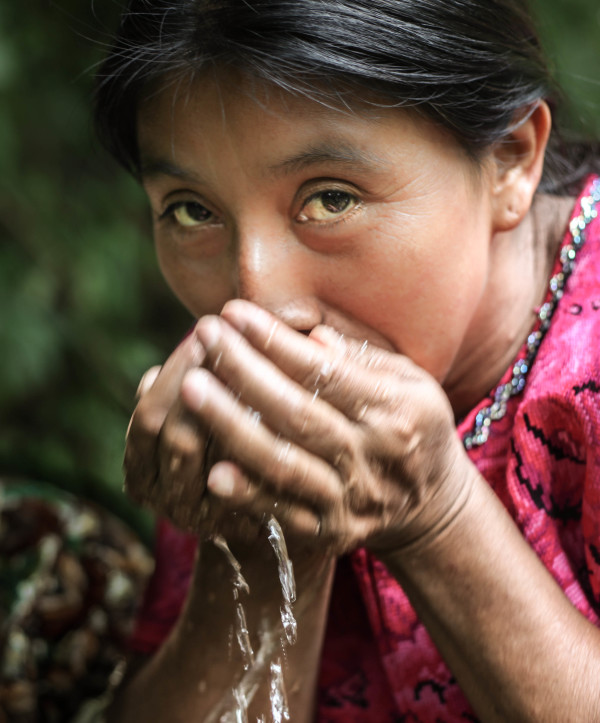Coffee and the Global Water Crisis
This post provides a summary of SCAA’s forthcoming policy brief on Water Security in the Coffeelands, to be published in mid-2016. As a prelude to this publication, the SCAA Sustainability Council has organized a panel called “Water in the Coffeelands: How Coffee Can Make Water Cleaner and Landscapes Greener” at the SCAA Expo in Atlanta (9am, Friday, April 15). This summary serves as a backdrop for this panel discussion.
We face a global water crisis.
Rapid economic development combined with exponential population growth over the past century are increasing demands on water resources while environmental degradation threatens water supplies. As a result, water scarcity has risen to the top of the list of global social and economic risks. (See the 2016 Global Risk Report by the World Economic Forum).
A few data points highlight the growing water crisis:
- Over the past century, the world population quadrupled while water use increased seven-fold.
- As the demand for water increases, water supplies are under pressure. In nearly every region of the world, water is being used, wasted, and polluted at a scale that threatens human health and economic development – for ourselves and for future generations.
- Threats to water resources are evidenced by the reduction in base flows in streams and rivers, over-extraction of aquifers, and contamination of surface and groundwater.
- Many coffee producing countries face water crises, where the poor suffer disproportionately from water scarcity and poor quality water.
Coffee and Water Resources
The way coffee is produced and processed can threaten and degrade water resources – or coffee can be produced and processed in ways that protect and improve water resources.
Fortunately, the coffee industry has developed, demonstrated, and documented the good practices that need to be adopted at origin to protect water resources. Unfortunately, a majority of farms and mills do not apply these good practices, at least at the scale they need to.
Now, the specialty coffee community has an enormous opportunity to improve water security in the coffeelands by raising awareness and creating incentives for water-smart production and milling practices. Decisive leadership by the coffee industry to protect water resources can be a driver for similar action by the agricultural industry overall – which is arguable the single biggest threat to water sources, globally.
Coffee Production and Water Resources
Sustainable coffee agroforestry practices increase water filtration, improve soil health, and increase the recharge rate of aquifers while reducing soil erosion and sedimentation. Water-efficient practices and technologies at coffee mills can reduce coffee’s water footprint, and effective wastewater treatment can improve water quality and increase the amount of water available for other purposes downstream, including domestic supplies and irrigation.
In contrast, poor agricultural practices can cause soil erosion and degrade watersheds, with sometimes devastating consequences. Currently, too few coffee farmers (small and large) apply good agricultural practices.
Coffee Processing
Coffee wet-milling is by far the most common way to process coffee. This process affects water security in two ways—through the water it extracts or diverts from local water sources and the wastewater it releases back into these sources. There are known technologies and practices that mitigate the impact of wet-milling on coffee, but very few mills (less than 15%, globally) apply these technologies. Expert estimates suggest that as little as 5% of certified mills are treating wastewater appropriately.
How do we scale up water-smart milling and farming practices?
The draft version of the SCAA policy brief on water security offers six recommendations for upscaling positive impacts on water resources:
RECOMMENDATION #1: Know the Source
The starting point for engaging on water security is learning about water resources in the specific landscapes where you are sourcing coffee.
RECOMMENDATION #2: Promote water-smart farming practices
Water-smart agricultural practices are those that use water efficiently and minimize impacts to downstream water quality. They are good for coffee production and good for water resources: good coffee management leads to good water management.
RECOMMENDATION #3: Support water-smart processing
Two actions at the mill can reduce the impact of coffee processing on water resources: (a) reducing water use and (b) treating wastewater before it returns to streams and rivers. Research and field evidence demonstrate that more efficient water management can deliver improvements in quality and profitability.
RECOMMENDATION #4: Create incentives for water-smart practices
Introduce clear incentives for supply chain partners to adopt water-smart farming and milling practices—not just because they will contribute to increased water security in the coffeelands, but because they will also go a long way to helping your company secure long-term supply by making production more resilient at the farm level.
RECOMMENDATION #5: Engage consumers about water through their coffee
Coffee is an exceptional way to build consumer awareness about water resources. A growing number of coffee companies are supporting and investing in water stewardship, but this one area where there is room for specialty coffee companies to more and to say and do more.
RECOMMENDATION #6: Strategic collaboration
Water-related risks in coffee supply chains can rarely be dealt with independently by industry. Sustainable solutions at a scale that is meaningful require collaboration among multiple stakeholders across sectors. Enduring solutions require collaboration at a landscape level among all actors whose economic activities rely on and in turn affect water quantity and water quality.



